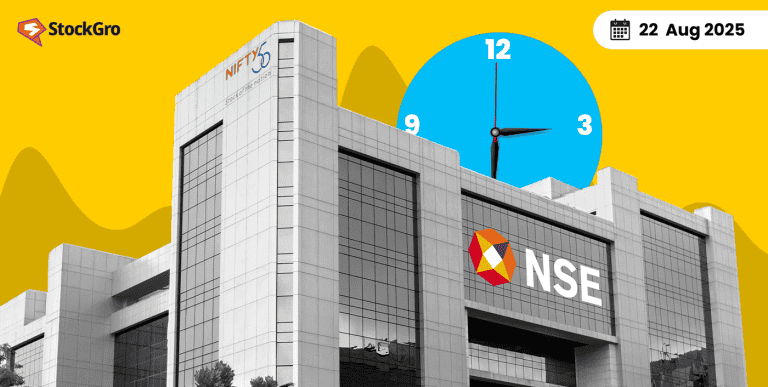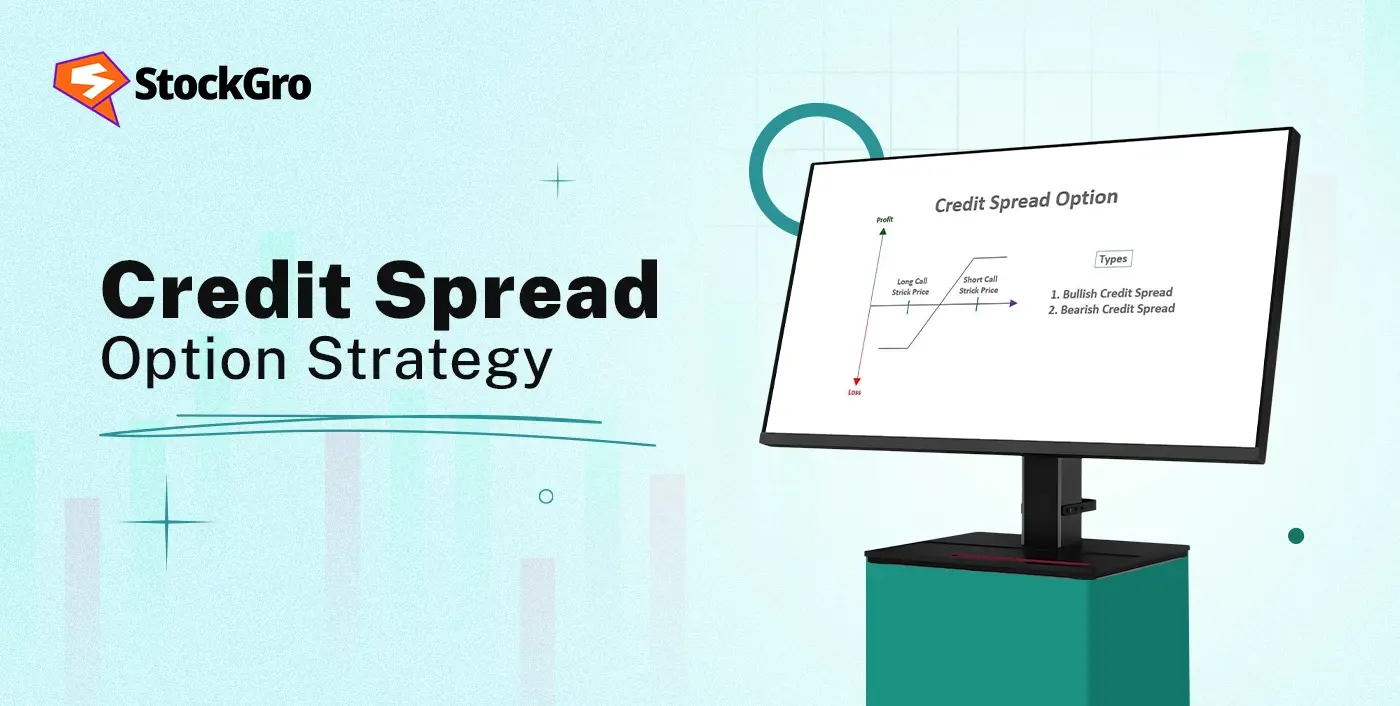
Options trading brings a wide range of strategies to benefit from different market movements. Debit spread is one such popular defined-risk option that lets traders control costs while benefiting from directional moves. Unlike outright purchasing or calls and puts, a debit spread is all about buying and selling options simultaneously on the same stock, which reduces potential risks and premium outlays. In this blog, we’ll explore the debit spread strategy, its types, techniques, and how investors apply them efficiently.
What Is a Debit Spread?
A debit spread is a type of options strategy that lets investors participate in buying as well as selling options concurrently with one expiration date but a diverse set of prices, specifying the net charge to participate in the trade as “debit”, as the name defines. The purchased option authorises traders to buy or sell the stock, whereas the sold option balances some of the premium. Such options trading strategies limit both gain and loss potential. Debit spread is usually applied to take a bullish or bearish viewpoint while handling capital risk.
Types of Debit Spreads: Bull Call & Bear Put
There are two key debit spreads:
1. Bull Call Spread
- Traders opt for a bull call spread when expecting an adequate rise in the asset price.
- It indicates buying a call option at a lower set price and writing (selling) a call option at a higher one concurrently.
- The premium earned from the sold call lessens the net cost of the trade.
- The gap between the set price and the net debit is what you earn.
2. Bear Put Spread
- Traders go for a bear put spread when they think the stock price will drop a bit.
- It specifies purchasing a put option at a greater set price and writing (selling) one at a lesser price.
- Like the bull call spread, selling the lower strike put lessens the entire cost.
- The gap between set prices and the net debit is what you earn most.
How a Debit Spread Works: Setup & Mechanics
A debit spread lets you make a directional bet while keeping your risk in check. Here’s how it works:
- Pick a stock and determine whether the position is bullish or bearish.
- Pick the right set prices: Buy an option near the latest price (ATM or ITM), and sell one that is further away (OTM).
- To start the trade, buy the long option and sell the short option concurrently in the same expiration cycle.
These strategies are a budget-friendly approach to participating in price swings. As the short option balances the cost partly, the net premium paid is less than buying a single option entirely.
Breakeven, Max Profit & Max Loss Calculation
For bull call spreads:
- Breakeven means a lower strike price with a net debit invested.
- The gap between strike and net debit preserves your highest earnings.
- Maximum loss means the net debit paid.
For bear put spreads:
- The gap between higher set price and net debit paid is identified as breakeven.
- The difference between set prices and net debit specifies the maximum yield.
- Maximum loss means net debit paid.
This planning lets investors study risk-reward proportions and adjust position sizing.
Advantages of Debit Spreads
- Limited Risk: Unlike outright option purchases, which can lose the entire premium with a failed trade, here the net debit paid is the maximum loss.
- Lower Cost: Selling the second option lessens the net premium outlay.
- Defined Profit: Maximum profit is known beforehand, letting you plan better risk management.
- Flexible Tactics: Can be applied to both bullish and bearish viewpoints.
- Profit of Theta: The short option generates yield by moderately balancing theta’s effect on the long one.
Disadvantages & Key Risks
- Capped Profit Possibility: The profit is capped between the strikes minus the debit paid.
- Needs Moderate Price Movement: Debit spreads are influenced by moderate price moves; very small moves may not generate income.
- Intricate Execution: Demands simultaneous entering of multiple contracts, which may amplify transaction costs.
- Liquidity Risk: If either the leg or the spread is illiquid, you may face difficulty entering or exiting the trade at desirable prices.
Debit Spread Vs Credit Spread: Comparison
| Feature | Debit Spread | Credit Spread |
| Net Cash Flow | To enter the position, investors pay a net premium beforehand, which is the cost of establishing the spread. | Investors receive a net premium beforehand with immediate earnings, which also caps the maximum profit. |
| Market Movement | Primarily bullish or bearish, applied while anticipating an adequate directional swing. | Based on whether it’s a credit call spread, put spread, or iron condor, it can be bearish, neutral, or bullish. |
| Ultimate Profit | Limited, considered as the gap between strike prices and the net debit invested. Profit happens if the stock moves favourably towards the sold strike. | Limited to the premium earned, where the spread profits entirely if the stock stays within or moves favourably related to the sold set prices. |
| Maximum Loss | Limited to net debit paid. Even if the trade entirely fails, the loss cannot exceed the primary outlay. | Limited to the gap between strikes minus net premium received, where a loss happens if the asset moves abruptly against the position. |
| Risk | Risk is limited and predefined, making it perfect for conservative or moderate investors. | Risk is also defined, but it can be substantial relative to the premium received; it needs careful management. |
| Ideal Market Condition | Works best in reasonably trending markets where price move is anticipated enough to profit but not excessively. | Perfect for neutral to marginally directional markets, where minimal movement lets the sold option expire valueless. |
| Time Decay Impact | Beneficial, as the short option in the spread balances some decay, gradually decreasing cost. | Favourable; the sold option loses value while approaching expiry, since time decay works for you. |
| Volatility Sensitivity | Beneficial when implied volatility is moderate to growing, optimizing the value of the long option. | Beneficial when implied volatility is initially high and decreases, helping the sold option lose value faster. |
Ideal Market Conditions & Strategy Applications
Debit spread strategy is ideal for moderately trading markets, where the investor anticipates a definite but not extreme price swing. They are specifically impactful when:
- Implied volatility is modest to high, enabling equitable premiums for sold options.
- Unexpected price swings within a certain range instead of extreme swings.
- Investors seek a lower-cost substitute to complete option buying while managing risk.
Applications involve:
- Earnings play with moderate movement expectations.
- Technical breakout setups with probable price targets.
- Hedging other positions with a limited directional bet.
Example Trade Walkthrough (Call & Put Spreads)
The following Angel One (ANGELONE) chart serves as an example of a debit spread option strategy in action. To restrict risk and reward, a net premium is paid upfront in a debit spread, which can be either a bull call spread or a bear put spread.
To illustrate, a bull call spread can be initiated by purchasing a call option at a lower strike (e.g., 2500) and selling another at a higher strike (e.g., 2700) if one anticipates a rebound from the RSI oversold zone, which is typically seen in the chart around late June or early July. Compared to purchasing a naked call, this limits your upside but lowers the cost. After the stock price peaked around 3300, a bear put spread might be established by purchasing a put at a higher strike (let’s say 3200) and selling another at a lower strike (let’s say 3000) if the stock price began to decline.
As the chart demonstrates, debit spreads are a cost-effective alternative to outright long calls or puts since they allow traders to profit from directional swings (a May rally or a July decline) while capping risk.
Adjustments & Exiting Strategies
Investors may balance or exit a vertical debit spread to amplify results:
- Early Closing: To secure profits, exit when the position reaches maximum profit before expiration.
- Rolling Forward: To capture additional movement, extend the position to the following expiration.
- Exiting One Leg: In specific conditions, closing the short leg while holding the long can balance the risk-reward ratio.
- Tracking Volatility: Modification in implied volatility impacts option prices; fine-tuning may boost profitability.
Traders can amplify gains while staying within certain risk limits, just by actively monitoring the trade.
Conclusion
The debit spread is a multipurpose and defined-risk options strategy, perfect for investors seeking adequate price swings, where instead of buying and selling one option, traders can do both at the same time. This can help lower the option’s cost, limit potential losses while still letting you profit from directional trade. Bull call spread works well if you think a stock will go up, and bear puts are good for bearish markets. Knowing the practices, studying market situations, considering risk-reward, and adjusting trade correctly promises that debit spread remains a powerful strategy in the toolkit of an option trader.
FAQs
A debit spread is applicable while purchasing an option and selling another one of the same type, but with a different price. You pay a net premium beforehand, hoping to generate income if the asset’s price moves the way you think it’ll. The long option benefits from favourable price movement, while the short option reduces the overall cost. Profit is limited to the difference between strikes minus the net debit, and losses are capped at the debit paid.
Investors can balance a debit spread by rolling up or down the strikes, prolonging expiry, or terminating the existing spread partially or fully in an unfavourable market movement. Early exit indicates locking in gains or limiting losses by writing the long option and repurchasing the short one. Deciding the right time to exit demands tracking price changes, time decay, and implied volatility. Using trading platforms with “spread close” orders simplifies executing these adjustments efficiently.
With a bull call debit spread, you purchase a call at a lower strike and sell it at a greater strike, guessing an adequate rise in the stock price. A bear put debit spread indicates purchasing a put at a greater strike while selling one at a lesser strike, expecting a drop in the asset price. Both spreads cost less than just buying a single option, and limit your gain or loss, making them ideal for directional trades with limited risk.
Traders usually opt for a debit spread when they assume an asset’s price will move a bit by a certain date. The best application is in trending markets or around things like earnings announcements, or during favourable volatility. The strategy suits traders who want limited risk but are willing to cap maximum profit. It’s also preferred when option premiums are high for a single option, making a spread more cost-efficient while still offering potential gains if the market moves in the anticipated direction.
With a debit spread, you pay a net premium beforehand. With a credit spread, you earn money beforehand. Debit spreads profit from moderately favoured price movement with manageable risk, where losses are involved in the debit paid. Credit spreads aim to earn money and benefit if the stock stays within a definite range, where risk is involved in the difference between strikes minus the premium received. Time decay and volatility influence each strategy separately, making them perfect for diverse market expectations.
Debit spreads have a set amount of risk; it’s basically what you paid for them. Significant risk factors include time decay disadvantage, where the option loses value over time if the stock doesn’t move fast. Another significant risk is pin risk, where the asset expires at or closes to the short strike, which can lead to confusing exercise or assignment. Vega positive market volatility changes can also lessen potential profits. If the stock moves against you early on, it can lead to partial losses, and spreads require careful tracking of expiration and price targets to amplify the strategy’s success.

